What is a digital twin
Digital twins, the keys to the Fourth Industrial Revolution
Wind turbines, engines or cranes can have a virtual replica that enables to prevent possible problems or risks and to experiment without compromising their operation before implementing new functionalities. It is not science fiction, they are digital twins, a disruptive technology that will be vital in the rise and progression of the Fourth Industrial Revolution.
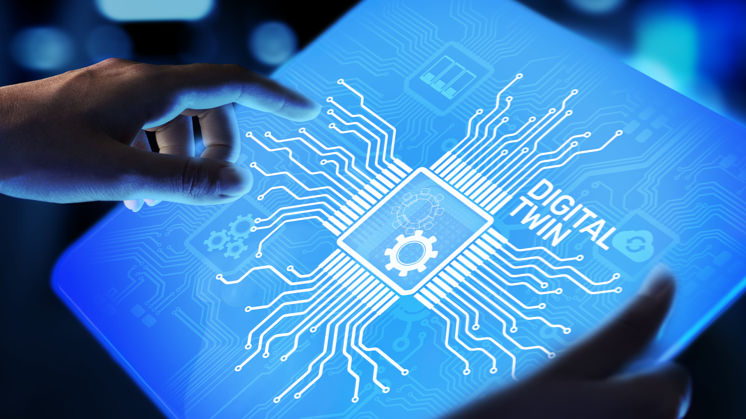

Digital twins will reduce costs, optimise production and enable new products to be created.
In 1968 the film 2001: A Space Odyssey surprised the world with a future in which astronauts spoke to a super computer (HAL 9000) that could monitor the ship and manage its operations. More than half a century later, reality is now touching the fiction devised by the minds of filmmaker Stanley Kubrick and author Arthur C. Clarke. And those symbolic fingers belong to the digital twins, protagonists of Industrial Revolution 4.0.
A digital twin is a virtual replica made in the image of a product - an aircraft turbine, the blades on a wind turbine, a building facade, etc. that incorporates data in time real that can be captured through sensors or technologies related to Big Data. Once this information has been collected, it is processed with Artificial Intelligence, Cloud Computing and machine Learning to give birth to a living representation that feels, thinks and acts.
The digital twin concept is not new. In 2002 at the University of Michigan, Michael Grieves, a computer engineer, mentioned the possibility of creating digital representations of physical systems that had their own entity during a talk with John Vickers, NASA's Director of Technology. Less than two decades later, specifically in 2018, consultancy firm Gartner named digital twins as one of the ten technological trends of that year.
The benefits of digital twins
Digital twins will transform many processes. Something that consultants such as Deloitte or KPMG already foresaw in 2017 in their Industry 4.0 and the digital twin and Beyond the hype reports respectively. The benefits are clear: organisations working with digital twins have seen a 15% improvement in key sales and operational metrics, as well as a more than 25% boost in system performance, according to Digital Twins: Adding Intelligence to the Real World Enlace externo, se abre en ventana nueva. , a study published by the technology consulting firm Capgemini in 2024. The report, based on a global survey of more than 1,000 companies, notes that organisations have also achieved on average a 16% improvement in sustainability through by using this technology.
Enlace externo, se abre en ventana nueva. , a study published by the technology consulting firm Capgemini in 2024. The report, based on a global survey of more than 1,000 companies, notes that organisations have also achieved on average a 16% improvement in sustainability through by using this technology.
Digital twins, which can operate separately, have a number of advantages that enable businesses to:
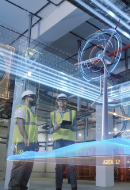
Digitalisation in renewable energy
Why is digitalisation crucial for the future of energy systems?
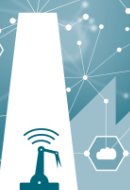
Predictive maintenance
The key data-driven technique for anticipating errors.
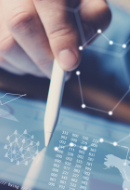
What is business intelligence
How to interpret data to take better business decisions.
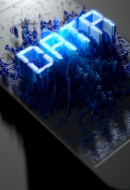
All about small data
Small data consists of analysing a set of data of small volume and format.
How does a company adapt to digital twins?
The growth of digital twins is unstoppable. And the data shows it: the digital twin market expanded by 71% in just two years, between 2020 and 2022, according to IoT Analytics in its Digital Twin Market Report 2023-2027 Enlace externo, se abre en ventana nueva. . Moreover, the global technology community agrees that this is a growing trend and that more and more companies will adopt this technology.
Enlace externo, se abre en ventana nueva. . Moreover, the global technology community agrees that this is a growing trend and that more and more companies will adopt this technology.
The implementation of a digital twin is not a process that can be completed overnight. In fact, it will completely transform these companies. Consequently, companies that decide to back this technology will need to address the following challenges:
What does a digital twin do?
Source: KPMG & Deloitte.
THE DISRUPTION OF DIGITAL TWINS
Digital twins are a disruptive technology that promises to revolutionise the industry and will be fundamental for 4.0 factories. But, how will these changes take shape? The production of customised pieces that are adapted to customers' demands and specific requirements will lead to greater satisfaction, more efficient processes will result in considerably lower polluting emissions and data analysis and subsequent simulation will enable predictive behaviours to be created that will optimise results.
But will this technology only be relevant to machines or can it have direct applications for human beings? In relation to the health sector, for example, digital twins could help create health care plans and increase preventive measures in the face of possible diseases.


















